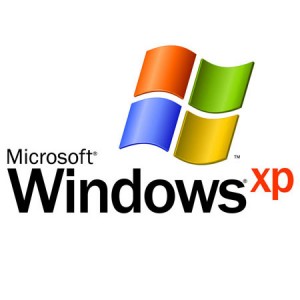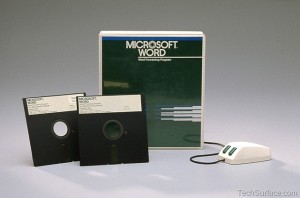Microsoft
Windows XP Released
Microsoft releases the operating system Windows XP, the successor to both Windows 2000 and Windows ME. Designed to unify the Windows NT line and Windows 95 line of operating systems, Windows XP was not replaced by Microsoft until January 2007 with Windows Vista. However, with a nearly six-year run and the public debacle surrounding the release of Windows Vista, Windows XP remained the world’s most popular operating system until August 2012.
Microsoft Word 1.0 for DOS
Microsoft releases their first software application, Microsoft Word 1.0. For use with MS-DOS compatible systems, Word was the first word processing software to make extensive use of a computer mouse. Not coincidentally, Microsoft had released a computer mouse for IBM-compatible PCs earlier in the year. A demo version was also included for free with a copy of PC World magazine, marking the first time a floppy disk was included with a magazine.
Windows 95 Released
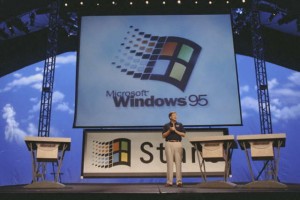
Kicking off one of the largest product launches in technology history, Microsoft releases the highly anticipated Windows 95. More than one million copies will be sold in the first four days of its release.
Apple Loses to Microsoft in Court
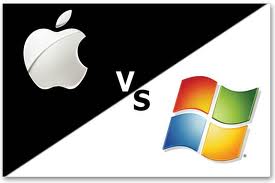
Perhaps the most famous lawsuit in technology history is decided for Microsoft. Apple claimed that Microsoft’s Windows violated their copyrights on the “visual displays” of the Macintosh. The judge in the case ruled that most of the claims were covered by a 1985 licensing agreement. Other claims were not violations of copyright due to the “merger doctrine”, which basically states that ideas can not be copyrighted. This paved the way for Microsoft to develop Windows 95, which imitated the Macintosh even more so than previous versions of Windows.
The First Internet Explorer
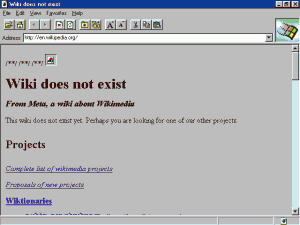
Microsoft introduces Internet Explorer, which at the time was a modified version of Spyglass Mosaic, which Microsoft had licensed. Later when Microsoft began including Internet Explorer for free with Windows, Spyglass sued Microsoft for not paying what they felt were the proper royalties. Microsoft settled for $8 million.
Windows Gets Blasted
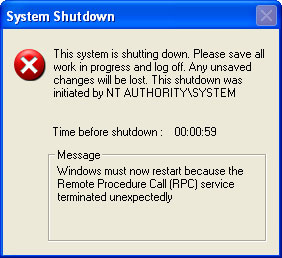
The Blaster worm, also known as MSBlast or Lovesan, begins to spread on the Internet, infecting Windows XP and Windows 2000 computers. The primary symptom of the worm was the crashing of the RPC service, which would trigger the computer to shut itself down and reboot as shown in the graphic. Microsoft estimated the number of machines infected between 8 and 16 million. Damage caused by the worm was estimated at $320 million.
Apple and Microsoft Call Truce
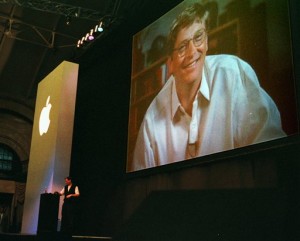
At the Macworld Expo in Boston, Steve Jobs announces that Apple and Microsoft have signed a five-year alliance. Bill Gates famously makes his seemingly ominous “big brother” appearance on the large presentation screen during the announcement. As part of the deal, Microsoft committed to continuing development of Microsoft Office for Mac over the next five years, Apple would make Internet Explorer the default web browser on the Mac, Apple and Microsoft would collaborate on Java compatibility, and Microsoft invested $150 million in Apple stock. However, the most important part of the arrangement is that both companies would cross-license all existing patents along with any new patents over the next five years, Apple would drop their long-running series of patent-infringement lawsuits against Microsoft, and Microsoft paid an undisclosed amount of money to Apple.
The common assumption in the tech community was that Microsoft’s $150 million investment in Apple saved the company. However, the reality is that with Apple holding $1.2 billion in cash at the time, $150 million was a relatively small sum of money. Some now believe the undisclosed amount of money that Microsoft paid Apple was in fact a secret settlement to the patent-infringment claims, a large part of which was related to Apple’s claim that Intel and Microsoft stole code related to the QuickTime multimedia technology. Estimated at anywhere between $500 million to $2 billion, this was the real meat of the so-called “cross-licensing” arrangement. It was likely this much larger undisclosed amount, plus the approximately $1 billion Apple earned by divesting itself of most of their investment in ARM stock over the course of 1998-1999, along with the show of confidence that Apple would be around at least another five years that gave Apple and Steve Jobs the breathing room needed to reinvent Apple and eventually build it into the most valuable company in the world.
Microsoft Buys Full Rights to 86-DOS
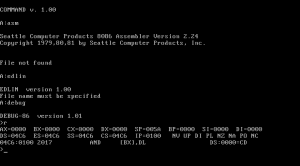
About two weeks before IBM begins shipping the first IBM PC, Microsoft buys the full rights to the operating system 86-DOS, formerly known as QDOS (Quick and Dirty Operating System), from Seattle Computer Products for $50,000. Microsoft had previously paid $25,000 to SCP for a non-exclusive license in December 1980 in order to begin porting the operating system to the IBM PC, which used the Intel 8088 processor. Microsoft renamed 86-DOS to MS-DOS and licensed it to IBM as PC-DOS. SCP would later sue Microsoft claiming fraud because Microsoft did not reveal IBM as a licensee. The case was settled in SCP’s favor for 1 million dollars, a fraction of the annual revenue Microsoft was receiving from MS-DOS and PC-DOS.
The Unholy Alliance is Born
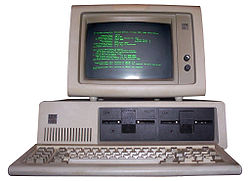
Representatives from an IBM facility in Boca Raton, Florida, where a small group of engineers were secretly developing the IBM PC, meet with Bill Gates and Steve Ballmer of Microsoft to discuss licensing software and an operating system for the still-developing PC. Not having an operating system to offer IBM, Microsoft will eventually buy the rights to QDOS/86-DOS from Seattle Computing Products, which they in-turn license to IBM as PC-DOS, and later license to PC clone makers as MS-DOS. This alliance between IBM and Microsoft forms one of the most dominant platforms in the history of computing, which goes on to crush nearly all other PC platforms in the 80’s and 90’s. Ironically this platform nearly crushes IBM itself as they lost control of the platform to PC clone makers and Microsoft.
Microsoft Incorporated

Founded six years earlier by Bill Gates and Paul Allen, Microsoft officially incorporated as a company. The timing of the incorporation was about 2 months ahead of the release of the IBM PC, which would soon change the fortune of Microsoft and the entire technology industry.

